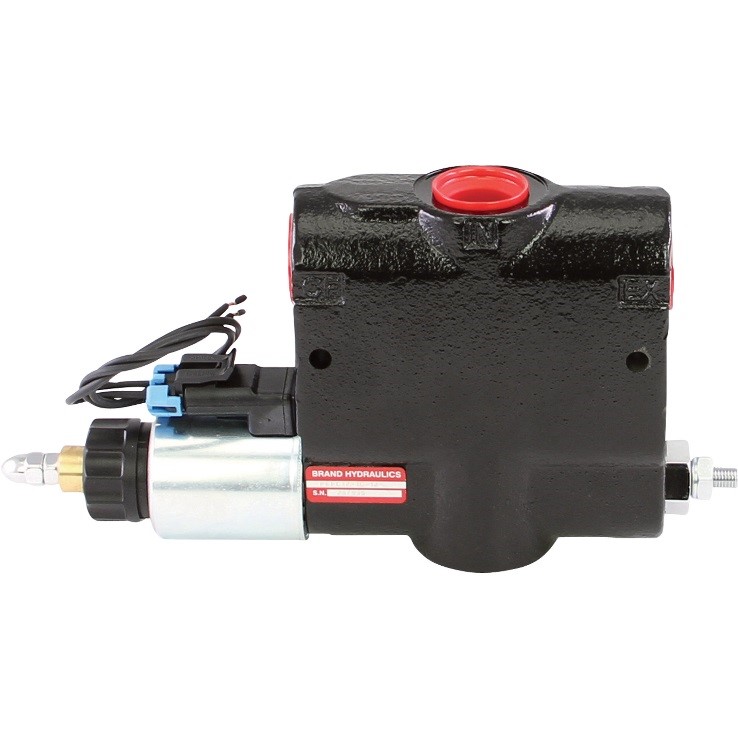Understanding the Relevance of Control Valves in Process Automation
Understanding the Relevance of Control Valves in Process Automation
Blog Article

Maximize Power Cost Savings and Comfort With Advanced Building Automation Controls
In the world of contemporary design and center management, the assimilation of innovative building automation manages stands as a crucial innovation. By utilizing the power of automation, structures can adjust, react, and evolve in methods that were once inconceivable.
Power Performance Conveniences
Energy efficiency advantages can substantially decrease power intake and functional prices in structures. By implementing energy-efficient methods and modern technologies, structure owners and operators can attain substantial savings while likewise contributing to environmental sustainability. Among the key benefits of boosting power effectiveness in buildings is the decrease of energy expenses. Energy-efficient systems, such as innovative structure automation controls, can optimize using resources like cooling, heating, and illumination, causing reduced power expenditures over time.
Moreover, boosted power effectiveness can extend the life expectancy of structure equipment and systems. By operating more effectively, cooling and heating systems, light, and other structure elements experience less deterioration, causing decreased upkeep and replacement costs. Furthermore, energy-efficient structures typically regulate greater residential or commercial property values and rental prices, supplying long-lasting monetary benefits to proprietors.
In addition, energy performance can enhance occupant convenience and performance. Appropriately managed indoor environments with ideal lights and thermal conditions produce an even more pleasurable and favorable workspace, bring about improved employee complete satisfaction and efficiency. In general, the power performance benefits connected with innovative building automation controls are multifaceted, including price savings, ecological stewardship, and resident health.
Improved Convenience Control
Enhancing comfort control in building atmospheres calls for an advanced assimilation of sophisticated automation systems for optimal occupant well-being. By making use of advanced building automation controls, centers can tailor the interior environment to meet the certain demands and choices of residents. control valves.
By integrating these advanced controls, structures can not only enhance convenience yet likewise improve power efficiency by optimizing system procedures based on real occupancy and use patterns. Ultimately, focusing on owner convenience via advanced automation systems leads to an extra pleasurable and much healthier indoor environment.
Operational Performance Improvements

Moreover, the implementation of real-time surveillance and analytics devices enables building drivers to recognize power ineffectiveness and operational anomalies promptly. By continuously checking energy usage patterns and system performance metrics, adjustments can be made in real-time to maximize energy usage and make sure peak functional effectiveness. control valves. Furthermore, including demand reaction strategies right into read review building automation controls can further boost operational performance by dynamically adjusting power usage based on grid problems and prices signals
Indoor Environment Optimization
Efficient interior climate optimization is a fundamental element of structure automation controls, ensuring passengers' comfort and health while optimizing energy savings. By making use of innovative sensing units and controls, developing automation systems can constantly check and change temperature level, humidity degrees, air high quality, and ventilation to develop an optimum indoor environment. Preserving constant and comfortable visit conditions not only improves occupant fulfillment however likewise enhances efficiency and total well-being.
Interior climate optimization also plays a vital duty in power effectiveness. By fine-tuning heating, air flow, and air conditioning systems based on real-time information and tenancy patterns, developing automation controls can considerably reduce energy intake - control valves. For example, carrying out methods such as demand-controlled air flow and thermal zoning can assist minimize power waste while ensuring that each location of the building gets the essential conditioning.

Lasting Setting Development
Structure automation manages not just optimize indoor environment problems for energy effectiveness and passenger convenience but also lay the structure for producing a lasting setting with calculated management of sources and systems. By incorporating sophisticated building automation modern technologies, such as sensors, actuators, and smart software application, facilities can readjust and keep an eye on energy use in real-time to lessen waste and minimize their carbon footprint. These systems make it possible for anticipating maintenance, identifying potential concerns before they escalate and maximizing tools efficiency to enhance durability why not find out more and effectiveness.
Additionally, sustainable setting development expands beyond power monitoring to include water conservation, waste decrease, and indoor air top quality enhancement. Building automation controls can manage water usage, detect leakages, and make certain proper garbage disposal practices, adding to overall sustainability efforts. Additionally, by keeping an eye on and managing air flow and filtration systems, these technologies enhance occupant health and performance while reducing energy intake associated with cooling and heating operations.
Final Thought
Finally, advanced building automation manages deal significant benefits in regards to power savings, comfort control, functional performance, interior environment optimization, and developing a sustainable environment. By implementing these controls, buildings can achieve optimal efficiency while reducing energy usage and enhancing owner convenience. It is apparent that making use of innovative automation modern technology is essential in improving structure efficiency and developing a more sustainable future.
Power performance benefits can dramatically reduce power consumption and functional costs in structures. Overall, the power efficiency advantages associated with innovative building automation controls are complex, including cost savings, ecological stewardship, and occupant health.
Additionally, incorporating demand feedback techniques right into structure automation controls can even more improve functional efficiency by dynamically changing energy usage based on grid problems and pricing signals.
Building automation manages not just maximize interior climate conditions for power efficiency and resident convenience however likewise lay the foundation for creating a sustainable setting via critical monitoring of resources and systems.In verdict, progressed structure automation controls offer significant benefits in terms of energy financial savings, convenience control, operational effectiveness, indoor environment optimization, and developing a sustainable environment.
Report this page